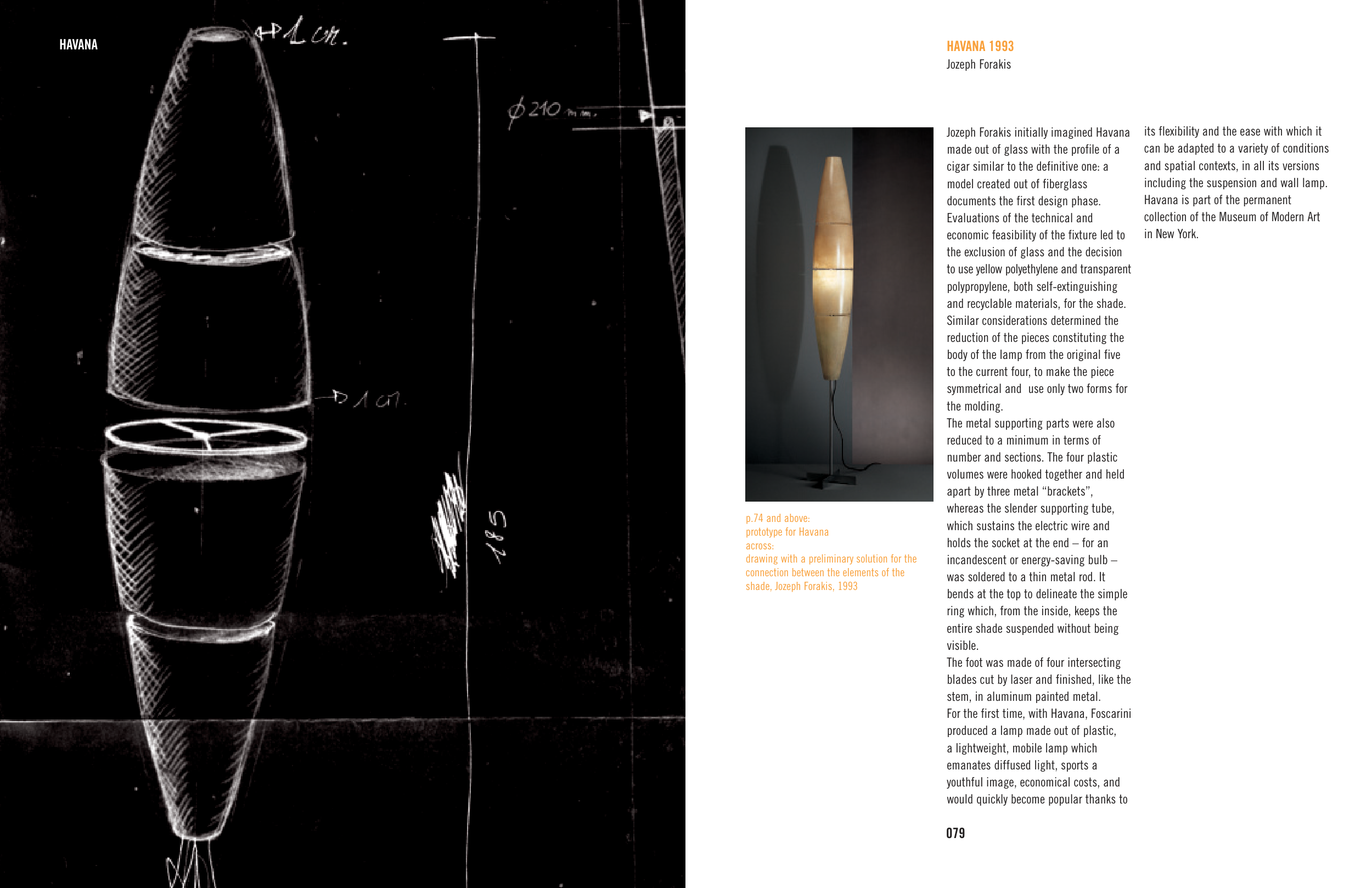079
HAVANA
HAVANA 1993
Jozeph Forakis
Jozeph Forakis initially imagined Havana
made out of glass with the profile of a
cigar similar to the definitive one: a
model created out of fiberglass
documents the first design phase.
Evaluations of the technical and
economic feasibility of the fixture led to
the exclusion of glass and the decision
to use yellow polyethylene and transparent
polypropylene, both self-extinguishing
and recyclable materials, for the shade.
Similar considerations determined the
reduction of the pieces constituting the
body of the lamp from the original five
to the current four, to make the piece
symmetrical and use only two forms for
the molding.
The metal supporting parts were also
reduced to a minimum in terms of
number and sections. The four plastic
volumes were hooked together and held
apart by three metal “brackets”,
whereas the slender supporting tube,
which sustains the electric wire and
holds the socket at the end – for an
incandescent or energy-saving bulb –
was soldered to a thin metal rod. It
bends at the top to delineate the simple
ring which, from the inside, keeps the
entire shade suspended without being
visible.
The foot was made of four intersecting
blades cut by laser and finished, like the
stem, in aluminum painted metal.
For the first time, with Havana, Foscarini
produced a lamp made out of plastic,
a lightweight, mobile lamp which
emanates diffused light, sports a
youthful image, economical costs, and
would quickly become popular thanks to
its flexibility and the ease with which it
can be adapted to a variety of conditions
and spatial contexts, in all its versions
including the suspension and wall lamp.
Havana is part of the permanent
collection of the Museum of Modern Art
in New York.
p.74 and above:
prototype for Havana
across:
drawing with a preliminary solution for the
connection between the elements of the
shade, Jozeph Forakis, 1993


